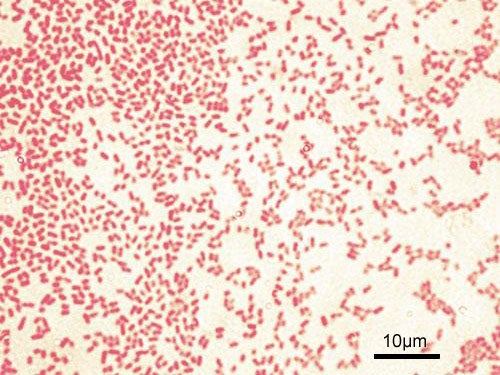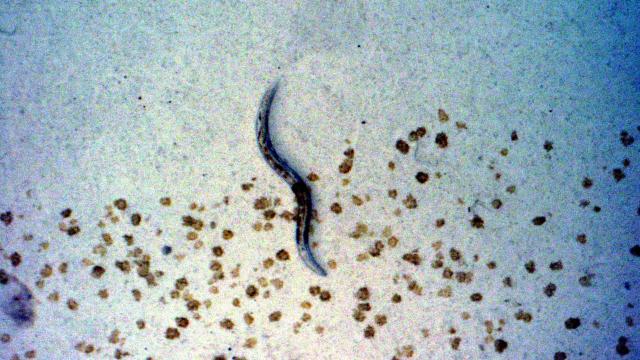With an average lifespan measured in days, the nematode C. elegans needs any trick it can muster to ensure that it and its offspring are successful in the game of life. Researchers recently discovered that the roundworms are able to warn progeny and other individuals in the species to avoid a dangerous germ.

Plenty of nematodes are extremophiles, meaning they can thrive in conditions that would be lethal to most other animals. But the roundworms are still vulnerable to some threats, like bacterial infections. In new work, a team of molecular biologists and geneticists from Princeton University studied how C. elegans are able to transfer avoidance memories “horizontally” — meaning not through inheritance — to unrelated animals. The team’s research was published last week in Cell.
Avoidance memories arise when a roundworm eats a harmful bacterium that looks like food and becomes infected by it. In the recent experiments, the bacterium was P. aeruginosa, a germ that can be a pathogen to C. elegans and other animals. In humans, the germ can infect the blood and cause pneumonia in the lungs. In 2017, P. aeruginosa caused over 30,000 infections and nearly 3,000 deaths in the United States, according to the CDC.
“We found that one worm can learn to avoid this pathogenic bacterium and if we grind up that worm, or even just use the media the worms are swimming in, and give that media or the crushed-worm lysate to naive worms, those worms now ‘learn’ to avoid the pathogen as well,” said Coleen Murphy, a geneticist at Princeton University and co-author of the study, in a university press release.
Previous research showed that C. elegans could share information several generations down the line through RNA. “It’s not exactly like inheritance, because with each generation the chances of passing on those changes decreases,” Ben Lehner, a geneticist at the Barcelona Institute of Science and Technology, told Gizmodo in 2017. “It’s inheritance, but with a high error rate.”
When the bacterium would infect C. elegans, some of the roundworms would take up a bit of RNA from the bacterium in its guts. Then, those nematodes’ offspring somehow knew that the bacterium was a threat and avoided it.
The recent team sought to understand what tells the worms to avoid the bacteria on a genetic level — the memory of danger that’s somehow passed from worm to worm. They found a genetic element called a retrotransposon was responsible. Nematodes that lacked the specific retrotransposon, called Cer1, could neither learn to avoid the bacterium themselves nor pass on such awareness to its progeny or other individuals.
“The findings by Murphy et al. are provocative,” said Craig Mello, a molecular biologist at the University of Massachusetts who was unaffiliated with the recent paper, in Princeton release. “This is another intriguing episode in a growing number of studies that have implicated systemic RNA signals in influencing behaviour transgenerationally, and if this study is correct, now even horizontally.”
The team’s results found that horizontal memory transfer only worked when C. elegans was exposed to P. aeruginosa, and not other bacteria. The nematode has learned a way to neutralise that specific bacterium and can share that knowledge with others. But that knowledge is only retained for four generations, they found — not bad for the long-term memory of a worm.
